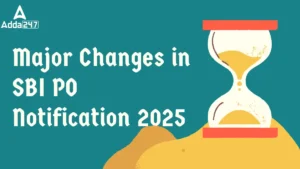Directions(1-5): In each of the question below a number of sentences are given which are denoted by I, II, III and IV. By using all the sentences you have to frame a meaningful paragraph. The correct order of the sentences is your answer. Choose from the five alternatives and the one having the correct order is your answer.
Q1. I. Now under liberated economy, they are learning to compete domestically and globally.
II. In India corporations until recently achieved success by avoiding competition using protected and regulated domestic markets.
III. The trend is irreversible.
IV. Business leaders are preparing themselves to meet competitive challenges and to avoid being swept away.
Which one of the following sequences is correct?
(a) I, II, IV, III
(b) II, IV, III, I
(c) II, IV, I, III
(d) III, IV, II, I
(e) II, I, IV, III
Q2. I. Recovery was given inadequate attention and consequently some bank branches regularly incurred heavy losses and their parent bodies had to bale them out.
II. As a result, banks indulged in extensive lending to borrowers who had little or no potential to make repayments.
III. To fulfill the social objectives laid down by the masters of nationalization banks were asked to lend to identify priority sectors.
IV. 1992-93 result showed that the loss making branches of public sector’s banks increased from 10,000 to 13,000 and the quantum of losses showed at 3,369 crores.
Which one of the following sequences is correct?
(a) II, I, III, IV
(b) IV, I, II, III
(c) III, I, II, IV
(d) III, II, I, IV
(e) IV, III, II, I
Q3. I. However different rulers and government dealt with the different groups in a compartmentalized manner.
II. Various situational political changes have taken place over the past three and half-centuries.
III. This tendency resulted in deeply embedded fragmented South-African society which became even more prominent in the period 1948 until the commencement of the new constitution on May 10, 1994.
IV. South Africa is a racially divided society since the first European settlers arrived in 1652.
Which one of the following sequences is correct?
(a) II, IV, I, III
(b) IV, II, I, III
(c) III, I, II, IV
(d) I, III, IV, II
(e) II, I, III, IV
Q4. I. Such a system will help identify and groom executives for positions of strategists.
II. Evaluation of performance is more often than not done for the purpose of reward or punishment for past performance.
III. They must become an integral part of the executive evaluation system.
IV. Even where the evaluation system is for one’s promotion to assume higher responsibilities it rarely includes items that are a key for playing the role of strategists effectivity e.g. the skills for playing the role of change agent and creative problem-solving.
Which one of the following sequences is correct?
(a) IV, II, I, III
(b) IV, III, II, I
(c) I, II, III, IV
(d) II, IV, III, I
(e) III, IV, II, I
Q5. I. But categorization schemes are not always helpful in determining what one can do with or about organizational culture.
II. Much of the literature on organizational culture is focussed on categorizing types of cultures.
III. It has taken the understanding of corporate culture for beyond what use to be called ‘the informal organization’.
IV, This literature is both ‘interesting and informative’.
Which one of the following sequences is correct?
(a) II, IV, I, III
(b) II, I, IV, III
(c) II, III, IV, I
(d) IV, I, II, III
(e) IV, II, I, III
Directions (6-15): Read the following passage carefully and answer the following questions given below it.
True, it is the function of the army to maintain law and order in abnormal times. But in normal times there is another force that compels citizens to obey the laws and to act with due regard to the rights of others. The force also protects the lives and the properties of law abiding men. Laws are made to secure the personal safety of its subjects and to prevent murder and crimes of violence. They are made to secure the property of the citizens against theft and damage to protect the rights of communities and castes to carry out their customs and ceremonies, so long as they do not conflict with the rights of others.
Now the good citizen, of his own free will obey these laws and he takes care that everything he does is done with due regard to the rights and well-being of others. But the bad citizen is only restrained from breaking these laws by fear of the consequence of his actions. And the necessary steps to compel the bad citizen to act as a good citizen are taken by this force. The supreme control of law and order in a State is in the hands of a Minister who is responsible to the State Assembly and acts through the Inspector General of Police.
Q6. The expression ‘customs and ceremonies’ means
(a) fairs and festivals
(b) habits and traditions
(c) usual practices and religious rites
(d) superstitions and formalities
Q7. A suitable title for the passage would be
(a) the function of the army
(b) laws and the people’s rights
(c) the fear of the law and citizen’s security
(d) the functions of the police
Q8. Which of the following is not implied in the passage?
(a) Law protects those who respect it
(b) Law ensures people’s religious and social rights absolutely and unconditionally
(c) A criminal is deterred from committing crimes only for fear of the law
(d) The forces of law help to transform irresponsible citizens into responsible ones
Q9. According to the writer, which one of the following is not the responsibility of the police?
(a) To protect the privileges of all citizens
(b) To check violent activities of citizens
(c) To ensure peace among citizens by safeguarding individual rights
(d) To maintain peace during extraordinary circumstances
Q10. Which of the following reflects the main thrust of the passage?
(a) It deals with the importance of the army in maintaining law and order
(b) It highlights role of the police as superior to that of the army
(c) It discusses the roles of the army and the police in different circumstances
(d) It points to the responsibility of the Minister and the Inspector General of Police
Q11. “They are made to secure the property of citizens against theft and damage”, means that the law
(a) helps in recovering the stolen property of the citizens
(b) assist the citizens whose property has been stolen or destroyed
(c) initiate process against offenders of law
(d) safeguard people’s possessions against being stolen or lost
Q12. Out of the following which one has the opposite meaning to the word ‘restrained’ in the passage?
(a) Promoted
(b) Accelerated
(c) Intruded
(d) Inhibited
Q13. Which one of the following statement is implied in the passage?
(a) Peaceful citizens seldom violate the law, but bad citizens have to the restrained by the police
(b) Criminals, who flout the law, are seldom brought to book
(c) The police hardly succeed in converting bad citizens into good citizens
(d) The police check the citizens, whether they are good or bad, from violating the law
Q14. Which of the following statements expresses most accurately the idea contained in the first sentence?
(a) It is the job of the army to ensure internal peace at all times
(b) It is the police that should always enforce law and order in the country
(c) Army and the police ensure people’s security through combined operations
(d) It is in exceptional circumstances that the army has to ensure peace in the country
Q15. The last sentence of the passage implies that
(a) The Inspector General of Police is the sole authority in matters of law and order
(b) In every State maintenance of public peace is under the overall control of the responsible Minister
(c) A Minister and a responsible State, Assembly exercise direct authority in matters pertaining to law and order
(d) The Inspector General of Police is responsible to the State Assembly for maintaining law and order





 The Hindu Review October 2022: Download ...
The Hindu Review October 2022: Download ...
 Major Changes in SBI PO Notification 202...
Major Changes in SBI PO Notification 202...
 SBI PO 2024-25 Notification Out, Exam Da...
SBI PO 2024-25 Notification Out, Exam Da...




